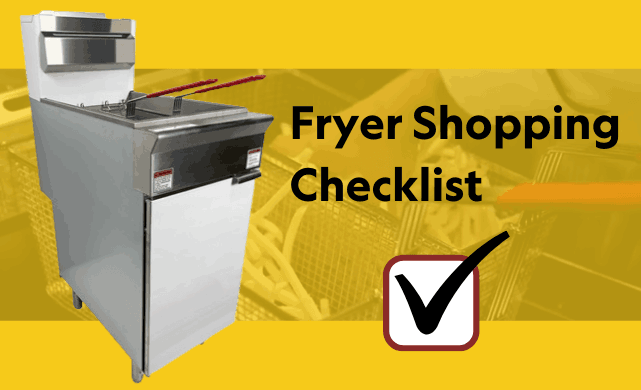Fryer Shopping Checklist
Are you thinking about shaking up your menu and adding some crispy, golden fried treats? Incorporating a commercial fryer into your foodservice business can enhance your offerings and attract new customers. Whether you're planning to introduce appetizers and side dishes like French fries and mozzarella sticks, or expanding your main courses to include items like coconut shrimp or scallops, fried foods are always a crowd-pleaser when done right. Before diving into the shopping process, there are a few key factors you'll want to consider to ensure you're selecting the right type of fryer for your needs. Here's a quick guide to help you narrow down your options. First, decide whether you need a floor model fryer or a countertop version. Floor models are better suited for high-volume use and larger spaces, while countertop fryers are ideal for smaller kitchens or low-volume operations. Make sure to measure the available space and think about how much fried food you plan to prepare daily. Next, consider what kind of power source is available in your kitchen. Gas fryers tend to be more common due to their lower operating costs compared to electric models. However, if you only have access to electricity, an electric fryer could be a practical alternative. Keep in mind that gas fryers require a direct gas line connection, which might involve additional installation costs. Propane fryers are another portable option, especially useful for catering or outdoor events where no utilities are available. The size of your fryer is also crucial. Determine how much food you expect to cook at one time. As a general rule, a fryer can produce roughly double its oil capacity in fried food. For example, a 40-pound fryer can yield between 60 and 80 pounds of food. Remember to leave enough space around the fryer for proper ventilation—about 6 inches of clearance on all sides. Consider the types of food you'll be frying. Dry-coated items like breaded chicken or fish tend to create more sediment, making a tube-style fryer preferable. These fryers feature a large sediment area that prevents burnt crumbs from spoiling your oil. On the other hand, wet-coated foods such as tempura vegetables create less sediment and work best in flat-bottom fryers. Lastly, ensure your kitchen meets the necessary ventilation standards. A commercial hood system is essential to remove grease, smoke, and fumes from the air, improving safety and maintaining a comfortable working environment. Always consult local regulations to confirm the specific requirements for your location. If you have any questions or need guidance choosing the perfect commercial fryer for your business, Cook’s is here to assist with detailed specifications, pricing, and more.

Keywords: Commercial Fryers
Resin Manhole Cover,Resin Water Manhole Cover,Resin Meter Box Manhole Cover,Round Resin Manhole Cover
Wuan Jianfeng Casting Co., Ltd. , https://www.hbjfcasting.com




